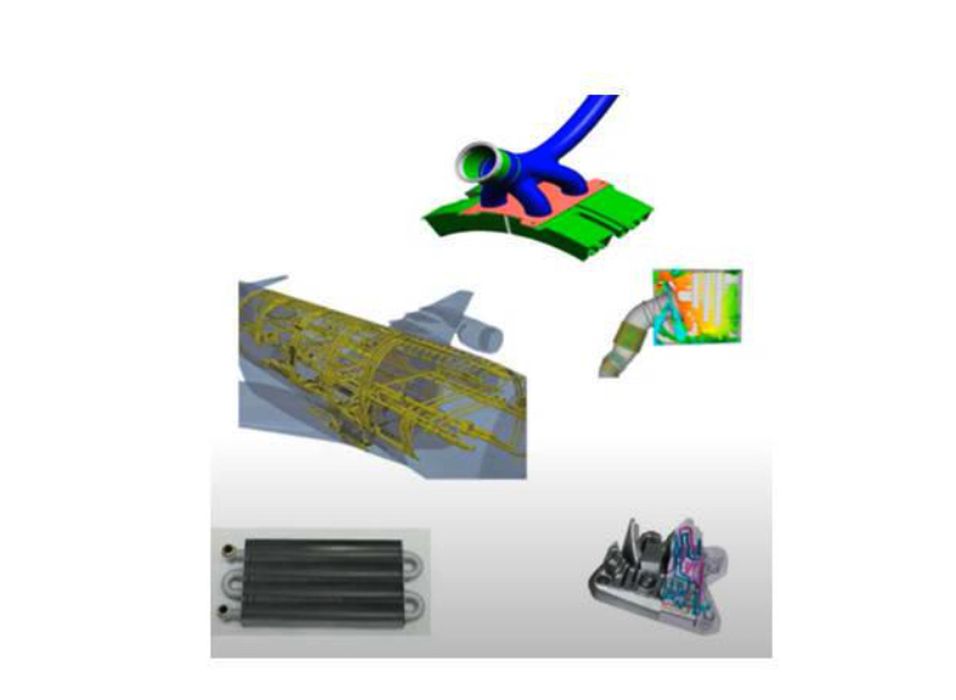
You can optimize internal fluid flow with an integrated generative design application.
With generative design, the computer can finally become an active ally in the design of a product and be considered the first true computer aided design. Note the emphasis on “aided.”
“Rather than asking if this shape meets the requirements, we are asking which shape best meets the requirements,” said Keith Meintjes of CIMdata in a 2017 blog post.
Looking critically at what has passed as computer-aided design, we realize that its middle name is something of a misnomer. CAD replaced our drafting tables, but like drafting tables, it only helped with the documentation of a design. The real design—the transformation of an idea into a shape—has already occurred in our heads. The drafting board helped the designer to lay out the design on vellum. CAD helped to define the design more neatly, more precisely and in three dimensions. Little design, if any, was taking place on either medium.
And so, to the present day, design continues as a mental exercise, perhaps helped by sketching on the side, using whatever is handy—a cocktail napkin, a tablecloth (why restaurants don’t take reservations for groups of engineers), the walls (why the modern offices have erasable wall surfaces or whiteboards), or, if the engineer is unabashedly cool, an iPad or its equivalent.
Enter Generative Design
Until now, generative design has primarily been demonstrated for structural optimization, where a part is usually optimized for mass while subject to loads and restraints based on the limits of the strength of its material. Centuries of study, testing and forensic examination, as well as a generation of simulation, has left engineers with a fairly good intuition of the mechanical behavior of parts. An experienced mechanical engineer has a fairly good chance of determining a passable structural part by considering how forces pass through it, maximizing material along those paths and minimizing material elsewhere.
An intuitive grasp of fluid flow, however, is further behind, and faulty fluid flow is something we continue to propagate. We excuse ourselves because fluid flow is invisible, dynamic. We can’t see it, so how can we correct it? Examples abound. A cargo container is dragged down the highway behind a truck. The underside of a car is a clutter of cavities and corners, pipes and brackets. A bus is as aerodynamic as a tool shed. The air ducts in our homes and offices are turn corners, as to the water pipes. If we could see the buffeting, the drag, the streamlines that break up into turbulent flow, then, surely, we would not let that happen. But what we don’t see doesn’t keep our attention.
Without aerodynamic scrutiny, fluid flow is subject only to other, admittedly practical considerations of commonly available stock material or manufacturing operations: containers are rectangular to accommodate efficient stacking and packing of their contents. The corrugated sheet metal used for shipping containers is necessary for strength but plays havoc on the airstream. Fluid flows around shapes constructed from flat stock that is joined to form corners cause separation in external flow and in internal flow (tubes, pipes and ducts), eddies and recirculation.
External Fluid Flow
In the world of fluid flow, external airflow is the poster child of computational fluid dynamics (CFD) programs. Our walls are adorned with multicolored streamlines over F1 racing cars and our bookshelves with pictures of airfoil’s angle of attack.
Still, external fluid flow simulation and testing is reserved for the most glamourous and expensive products—our airplanes, rockets and bullet trains. They are the ones most often depicted with visualized flow in CFD programs or in wind tunnels using smoke trails or fluttering ribbons on surfaces. Lesser products that could benefit from flow testing or simulation can’t afford it. A wind tunnel can cost tens of millions of dollars to build and hundreds of dollars an hour to rent. CFD, thought to be a savior of fluid flow and a less expensive and more practical alternative to wind tunnels, remains in the realm of expert practitioners and is still not mainstream in availability or ease of use for the typical product engineer.
Internal Fluid Flow
Less glamourous than external fluid flow but far more common is internal fluid flow, the flow inside vehicle and aircraft cabins, gas and liquid manifolds, automatic transmissions, exhaust systems, heat exchangers, gas turbines, rocket engineers, air ducts, pipes, dishwashers, pumps and compressors. But because it is inside—even more hidden from view—internal fluid flow is even less likely to be considered.
Read more at ENGINEERING.com
